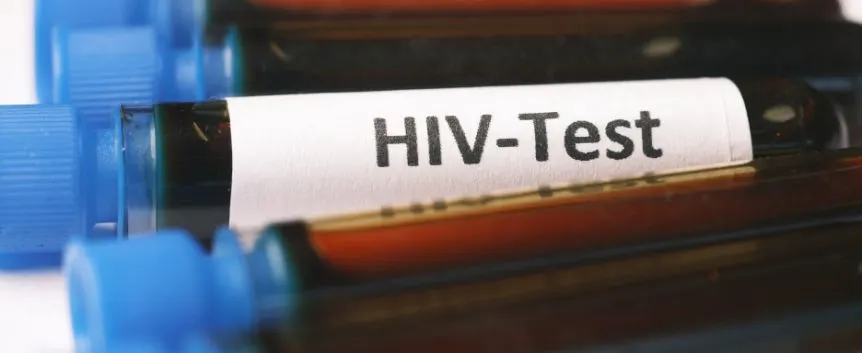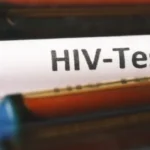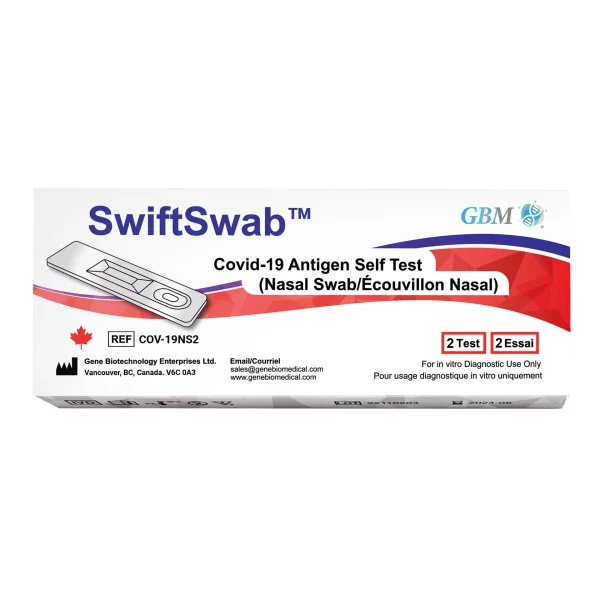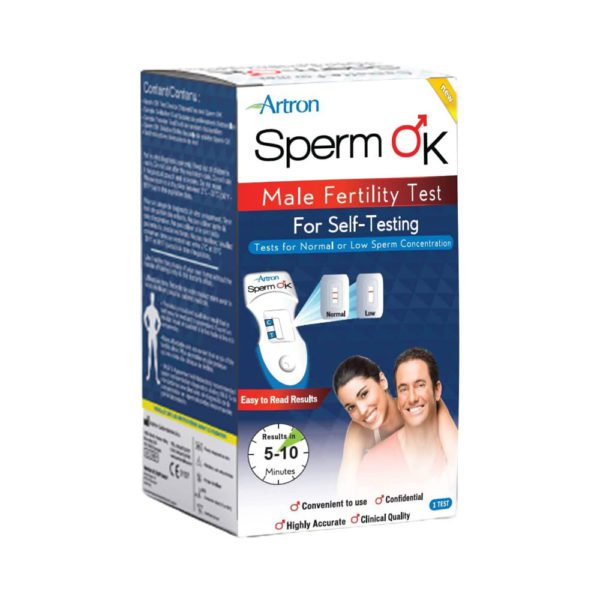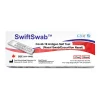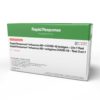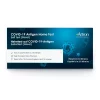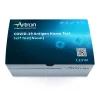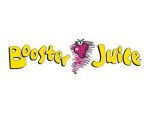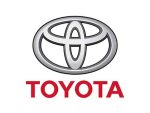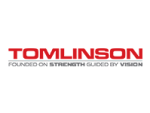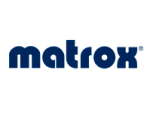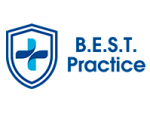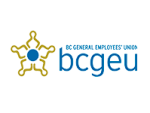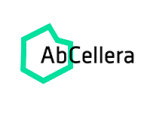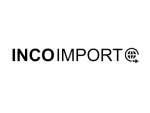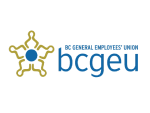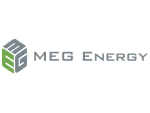Getting tested for HIV might feel overwhelming at first, but think of it as an empowering step toward understanding and taking control of your health. Whether prompted by a specific risk or as part of routine health care, knowing your HIV status can help ease uncertainty and replace fear with confidence.
What is an HIV test?
An HIV test is a diagnostic tool designed to determine if you have been infected with HIV, which is the causative agent of acquired immunodeficiency syndrome (AIDS). The most important goal of HIV testing is to identify infected individuals to provide them with early treatment and support, while also implementing measures to prevent the virus’s spread. These tests can detect the presence of HIV antibodies, antigens, or the virus’s RNA in the blood.
Why is it important to get tested for HIV?
Getting tested for HIV marks the first step towards taking control of your health. When you know your HIV status, you can make informed decisions regarding your healthcare and lifestyle.
For those who test positive, early detection facilitates access to antiretroviral therapy (ART), significantly enhancing life quality and minimizing the risk of transmitting the virus to others.
Conversely, a negative result can provide peace of mind and essential information for prevention. Regular HIV testing is part of comprehensive health care, particularly for individuals at elevated risk of infection. Early detection is key in managing HIV effectively, preventing its progression to AIDS, and curbing its spread within communities.
Understanding your HIV status through testing is a critical component of health management, informed decision-making, and prevention strategies.
What are the main types of HIV tests?
There are three primary types of HIV tests, each designed to detect different markers of the virus at various stages of infection:
| HIV Test Type | Window Period | Accuracy | Availability | Avg Price (Canada) |
| Antibody | 3-12 weeks | >99% after 3 months | Clinics, home self-test kits | < $60 |
| Antigen/Antibody | 2-6 weeks | >99% after 4 weeks | Clinics, labs | Covered by healthcare |
| Nucleic Acid Test | 1-4 weeks | >99% | Limited clinics, blood donations | $100 – $250 |
1. Antibody tests
Antibody tests are designed to detect HIV by identifying antibodies produced by the immune system in response to the virus.
After HIV enters the body, it takes 2 to 8 weeks for these antibodies to develop. These tests are highly accessible and are offered in various formats, including rapid tests that deliver results in minutes and self-test kits for privacy and convenience at home. Their ease of administration and broad availability make them a cornerstone in initial HIV screening practices.
However, the effectiveness of antibody tests depends on correctly timing the test. If you conduct one too early, before enough antibodies have developed, you may receive a false-negative outcome.
With antibody tests, a positive result indicates the presence of HIV antibodies and the need for confirmatory testing.
Despite limitations in early detection, antibody tests remain reliable for identifying established HIV infections and are often the first step in diagnosis.
2. Antigen/antibody tests
Antigen/antibody tests differ from antibody tests by their ability to detect both HIV antibodies and the p24 antigen, a protein found on the surface of the HIV virus. This capability of dual detection enables the antigen/antibody tests to diagnose HIV earlier than antibody tests, which solely focus on the presence of antibodies.
Antibodies can take several weeks to become detectable, but the p24 antigen can be identified sooner, around 2 to 4 weeks after exposure.
This shorter window period for detection positions antigen/antibody tests as a more effective option for early HIV diagnosis.
3. Nucleic acid tests (NAT)
Nucleic acid tests are designed with the critical purpose of directly detecting the presence of HIV in the blood by targeting its genetic material, RNA. This method bypasses the need for the body’s immune response to manifest, which facilitates the earliest possible detection of the virus.
Since it can detect HIV within 2 to 3 weeks of exposure, NAT proves especially beneficial in situations where an early infection is suspected or when there is a need for confirmation of an HIV diagnosis.
Where can you get an HIV test?
HIV tests are widely available across various platforms. These include the following avenues:
-
- Health clinics
- Hospitals
- Community events
If you’re seeking more privacy, one discreet option is using at-home test kits. With this, you can conduct the test in the comfort and privacy of your own home.
What should you consider when choosing a type of HIV test?
When deciding on an HIV test, weigh several critical factors to see to it that what you choose meets your specific needs and situation.
Window period
The window period denotes the interval between the moment of potential exposure to HIV and when a test can accurately detect the virus. Testing too soon may result in a false negative due to insufficient time for the body to produce detectable levels of antibodies or antigens.
Accuracy
A quality HIV test should have high sensitivity (the ability to correctly identify those with the virus) and specificity (the ability to correctly identify those without the virus). If you use an HIV test kit with high accuracy, you’ll receive a reliable result, which can reflect your real HIV status.
Cost
The cost of HIV testing can vary significantly, influenced by factors such as:
-
- The type of test
- The testing facility
- Whether additional counseling services are utilized
Considering cost is important, as it may impact your ability to access timely and appropriate testing.
Availability
Availability pertains to the accessibility of different types of HIV tests across various locations and settings, and this is influenced by factors such as:
- Geographic location
- Healthcare infrastructure
- Local health policies
How do you prepare for an HIV test?
Most HIV tests require no special preparation. You can go directly to a testing site without needing to fast or take any other specific preparatory steps. However, certain tests, like nucleic acid tests (NAT), might have specific requirements, such as fasting.
It’s recommended to check with your healthcare provider or testing facility ahead of time for any particular instructions. Additionally, understanding the different types of HIV tests and evaluating personal circumstances, like the timing since potential exposure, can help individuals select the most suitable test and set realistic expectations for the testing process.
What do the results of an HIV test mean?
A negative result signifies that you don’t have HIV. However, the importance of the window period cannot be overstressed – if the test is conducted too soon after potential exposure, the virus might not be detectable yet.
In such cases, retesting after the window period is crucial for accurate results.
A positive result indicates the detection of HIV antibodies or the virus itself. If you test positive, you likely have HIV. To confirm this initial finding, schedule a confirmatory testing with your healthcare provider. These tests are more specific and aim to eliminate any possibility of a false positive result from the initial screening.
What are the next steps after a positive HIV test?
After receiving a positive HIV test, the first and foremost step is to undergo confirmatory testing to verify the initial results. Once the diagnosis has been confirmed, consult with your healthcare provider to explore and understand the available treatment options.
In addition to treatment, you should also adopt preventive measures to safeguard your partners, which includes practicing safer sex and being open about your HIV status with potential partners. Seek support from support groups and access counseling services for both emotional support and practical advice for navigating life with HIV.
How often should one get tested for HIV?
The frequency of HIV testing should align with your risk factors and lifestyle choices. The Centers for Disease Control and Prevention (CDC) suggests that everyone aged 13 to 64 should undergo HIV testing at least once as part of their routine health care.
Testing every 3 to 6 months is recommended for those who are at higher risk, including:
- Individuals with multiple sexual partners
- Those engaging in unprotected sex
- People who share needles for drug use
Frequently asked questions
What are the main types of HIV tests available?
The main types of HIV tests include antibody tests, antigen/antibody tests, and nucleic acid tests (NATs). Each type detects HIV at different stages of infection.
How accurate are rapid HIV tests?
Rapid HIV tests are highly accurate, offering results within 30 minutes. However, a confirmatory test is recommended for a definitive diagnosis.
Can HIV tests detect the virus immediately after exposure?
No, HIV tests cannot detect the virus immediately after exposure. The window period varies by test type, with nucleic acid tests detecting HIV the earliest, about 10 to 33 days after exposure.
What is the difference between an antibody test and an antigen/antibody test for HIV?
Antibody tests detect antibodies produced in response to HIV, while antigen/antibody tests can detect both the virus itself (p24 antigen) and the antibodies, allowing for earlier detection.
Are home HIV test kits reliable?
Home HIV test kits, particularly those approved by health authorities, are reliable for preliminary screening but should be followed by professional testing for confirmation.
Key takeaway
Getting tested for HIV is a simple yet powerful step to take control of your health.
With advanced options like antibody, antigen/antibody, and NAT tests, you can detect HIV early and act quickly. Regular testing helps you stay informed, start treatment if needed, and protect those around you. By prioritizing your health and getting tested, you’re making a positive choice for yourself and your community.
For quick and reliable HIV test kits, check out our shop and take the first step toward peace of mind.
